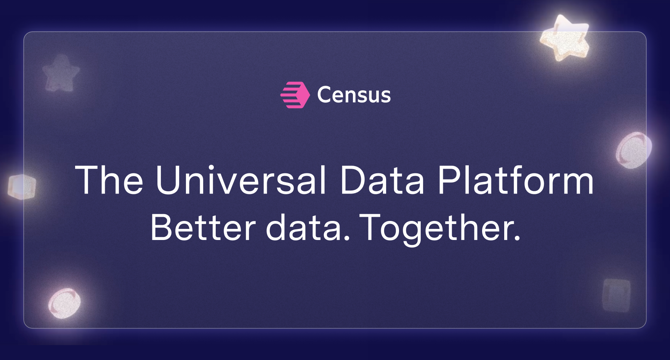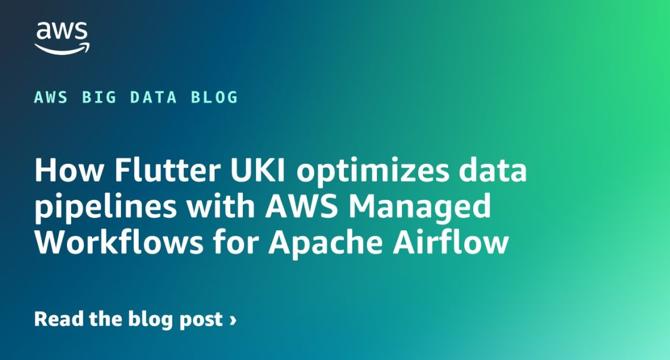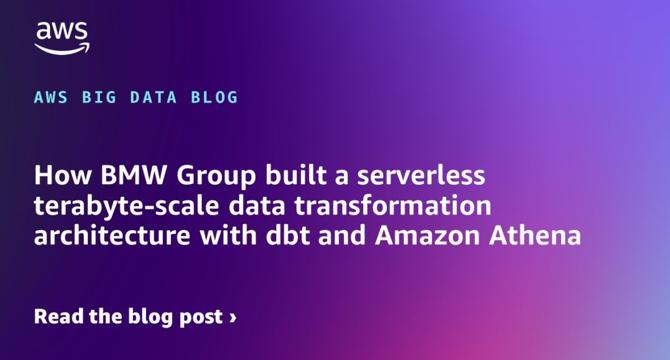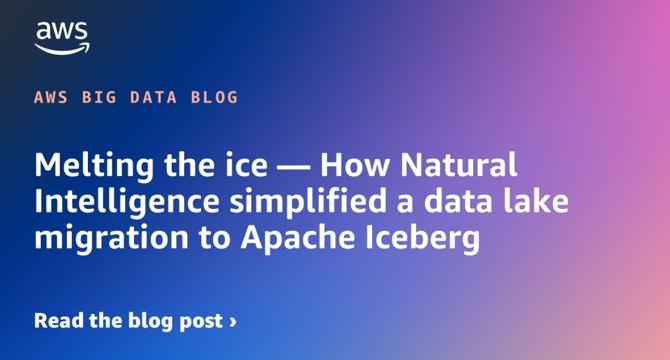Big Data News
TechBullion
344

Image Credit: TechBullion
Data Science & AI in 2030: The Changing Job Market and How to Stay Competitive
- The field of data science and AI is rapidly growing, leading to a high demand for specialized talent.
- By 2030, the data science and AI job market will evolve, requiring expertise in specific areas such as research, implementation, and production.
- Specialists are divided into researchers developing new models, engineers implementing machine learning solutions, and MLOps engineers handling model deployment automation.
- Future trends may bring even narrower specializations like ML engineers focusing on specific cloud vendors and experts in AI ethics and fairness.
- Key skills for success in data science include Python, SQL, cloud platforms understanding, and knowledge of tools like Pandas, NumPy, Jupyter Notebook, Docker, and Kubernetes.
- Soft skills like critical thinking, adaptability, and effective communication will also be crucial for professionals in the field.
- As AI advances, automation tools like AutoML will simplify tasks and democratize AI, potentially altering the job market landscape.
- The automation and democratization of AI may lead to an increase in entry-level specialists with basic knowledge, emphasizing practical skills over theoretical expertise.
- Engineers are expected to spend less time on routine tasks and more on optimization and interpreting results, shaping the future of data science and AI work content.
- Constant monitoring of industry trends, adaptation to changes, and development of both general and specialized skills will be essential for professionals to stay competitive.
- Soft skills such as effective communication and collaboration will remain critical for success in the evolving data science and AI job market.
Read Full Article
20 Likes
Siliconangle
276

Image Credit: Siliconangle
Fivetran to acquire Census to extend platform with reverse ETL and data activation
- Fivetran Inc. has signed an agreement to acquire Census, a universal data platform company, for an undisclosed price.
- Census offers a data activation platform that enables syncing data from cloud data warehouses to various business applications, pioneering the Reverse ETL methodology for real-time decision-making.
- The acquisition aims to combine Fivetran's centralized data warehouse capabilities with Census's data activation features to provide a fully managed platform for real-time data movement across different business applications.
- Post-acquisition, Census team joins Fivetran, with Census co-founder set to lead Fivetran's data activation strategy, enriching their operational analytics and AI activation offerings.
Read Full Article
16 Likes
TechBullion
63

Image Credit: TechBullion
The Role of Data Analytics in Modern Product Management: Tools, Techniques, and Trends
- Data analytics plays a crucial role in modern product management by providing insights for strategic decision-making based on real-time data, AI, and ML advancements.
- It helps in understanding user behavior, forecasting market trends, and iterating on products efficiently, leading to improved business success and competitive advantage.
- Data analytics involves collecting, processing, and interpreting data to optimize decision-making throughout the product lifecycle, from research and discovery to scaling and user engagement.
- Tools like Power BI, SQL, Google Analytics, and Mixpanel aid in data aggregation, trend detection, and customer interaction insights, enhancing decision-making capabilities.
- Real-time analytics tools like Segment and Apache Kafka enable monitoring of user activity for immediate feedback and optimization, while AI-based platforms like OpenAI and Google Vertex AI assist in predictive analysis and segmentation.
- Major companies like Netflix, Spotify, Amazon, and Airbnb use data analytics and AI to personalize recommendations, optimize pricing, predict demand, and improve user experiences.
- Product managers need to embrace automation, predictive insights, and real-time decision-making to stay competitive amidst advancing AI analytics and evolving market dynamics.
- Incorporating data-driven methods across all stages of product development is crucial for shaping the future of digital innovation and establishing industry benchmarks for efficiency and customer success.
- Data analytics continues to pave the way for informed decision-making, increased customer satisfaction, optimized product performance, and overall business growth.
- The integration of sophisticated analytics into product management will drive companies towards new levels of success and leadership in tomorrow's marketplace.
Read Full Article
3 Likes
Amazon
405

Image Credit: Amazon
Build end-to-end Apache Spark pipelines with Amazon MWAA, Batch Processing Gateway, and Amazon EMR on EKS clusters
- Amazon EMR on EKS provides managed Spark integration with AWS services and existing Kubernetes patterns for data platforms.
- Batch Processing Gateway (BPG) manages Spark workloads across multiple EMR on EKS clusters efficiently.
- Integrating Amazon MWAA with BPG enhances job scheduling and orchestration for building comprehensive data processing pipelines.
- Scenario of HealthTech Analytics showcases the use case for routing Spark workloads based on security and cost requirements.
- Integration of Amazon MWAA, BPG, and EMR on EKS clusters facilitates workload distribution and isolation.
- Custom BPGOperator in Amazon MWAA streamlines job submission, routing to EMR on EKS clusters, and monitoring tasks.
- Benefits include separation of responsibilities, centralized code management, and modular design for enterprise data platforms.
- BPGOperator handles job initialization, submission, monitoring, and execution across the pipeline.
- Deployment steps involve setup of common infrastructure, configuring BPG, and integrating BPGOperator with Amazon MWAA.
- Migration to BPG-based infrastructure involves setting up Airflow connections and migrating existing DAGs seamlessly.
- Cleaning up resources post-implementation and experimenting with the architecture in AWS environments are encouraged.
Read Full Article
24 Likes
Precisely
147

Image Credit: Precisely
Chief Data Officers: You need to be a Marketing Pro, Too
- Data strategy and marketing have key similarities, with effective communication and storytelling being essential in both roles.
- Data leaders, including CDOs and CDAOs, must focus on marketing their data strategies for success.
- Alignment with business value, data governance, and literacy are critical strategic foundations that data leaders often struggle with.
- Understanding stakeholders, their goals, top initiatives, and measuring results are key aspects for both marketing and data strategies.
- Activities like market research, competitive intelligence, and value-based positioning are crucial in both marketing and data strategy efforts.
- Internal advocacy and consistent communication play a significant role in gaining support for data initiatives within organizations.
- Data leaders should consider implementing marketing practices such as content creation, demand generation, and reporting for better data strategy adoption.
- While CMOs may not replace CDOs, collaboration between data and marketing teams can enhance the success of strategic initiatives.
- Thinking like a marketer can help data leaders drive traction and support for their data initiatives.
Read Full Article
8 Likes
Amazon
200

Image Credit: Amazon
Unified scheduling for visual ETL flows and query books in Amazon SageMaker Unified Studio
- Amazon SageMaker Unified Studio introduces a unified scheduling feature for visual ETL flows and query books, streamlining the workflow automation process.
- This feature enables users to schedule ETL flows and queries directly from the SageMaker Unified Studio interface, eliminating the need for complex configurations.
- Unified scheduling leverages Amazon EventBridge Scheduler to provide a seamless scheduling experience.
- Users can schedule visual ETL flows and query books with just a few clicks, enhancing data workflow automation.
- The unified scheduling is built on EventBridge Scheduler and SageMaker Training, creating EventBridge schedules automatically in AWS accounts.
- Users must have an AWS account, SageMaker Unified Studio domain, and the appropriate project profile to utilize the scheduling feature.
- Scheduling a visual ETL flow involves selecting the flow, setting schedule details, and creating the schedule for automation.
- Users can edit, pause, resume, or delete schedules for visual ETL flows within the SageMaker Unified Studio interface.
- For scheduling query books, users can select the query, define the schedule parameters, and create the schedule for automation.
- The unified scheduling feature simplifies workflow automation in SageMaker Unified Studio, enabling centralized orchestration of ETL flows and queries.
Read Full Article
12 Likes
TechBullion
201

Image Credit: TechBullion
Understanding Augmented Analytics: The Future of Data Analysis
- Augmented analytics, leveraging AI and ML, is revolutionizing data analysis by automating data preparation, discovery, and insight generation.
- Key features include NLP and machine learning, enabling users to interact with complex datasets more intuitively and efficiently.
- The technology allows for quick insights, simplifies data preparation, and democratizes data analysis for non-experts.
- Augmented analytics benefits various sectors such as marketing, manufacturing, and logistics, offering predictive capabilities and operational improvements.
Read Full Article
12 Likes
Siliconangle
281

Image Credit: Siliconangle
StarTree boosts AI agent support in its real-time analytics platform
- StarTree Inc. is enhancing support for AI workloads with enhancements including support for Anthropic PBC’s Model Context Protocol and vector embedding model hosting.
- MCP provides a standardized way for AI applications to connect with external data sources and tools, while vector embedding allows machine learning models to convert multimodal data types into dense numerical representations.
- These capabilities enable StarTree to support agentic AI applications, real-time retrieval-augmented generation, and conversational querying of real-time data.
- MCP support will benefit developers by eliminating the need to write custom code for integration, and it allows AI agents to dynamically analyze live enterprise data, simplifying deployment.
- Vector embeddings enable queries against data types that don't fit conventional SQL, facilitating real-time uses like financial market monitoring.
- StarTree announced the general availability of Bring Your Own Kubernetes, offering organizations control over infrastructure within their Kubernetes environments for regulated industries and cost-effective options.
- MCP support and vector embedding enhancements will be available in June and fall, respectively.
- StarTree aims to streamline AI agent support, real-time data analytics, and advanced pattern matching through these innovations.
- These developments cater to the needs of developers, stakeholders in the AI field, and organizations looking for efficient AI workload management solutions.
- Overall, StarTree's advancements in AI support and real-time analytics signify a significant step forward in enhancing data-driven decision-making processes and enabling intelligent applications.
Read Full Article
16 Likes
TechBullion
183

Image Credit: TechBullion
Regulating Algorithmic Bias Legal Responses To Discrimination In Big Data Decision-Making
- The development of algorithms operating in various fields has led to the reproduction of social biases, necessitating legal updates to protect discriminated population groups.
- Algorithmic bias, stemming from various sources, including data quality and algorithm design, leads to discriminatory outcomes in systems such as hiring and law enforcement.
- Automated decision-making systems often target vulnerable ethnic groups, promoting discrimination in areas like hiring and law enforcement.
- Transparency in algorithm operations is crucial to understand decision-making processes, maintain fairness, and prevent discrimination.
- The right to explanation under regulations like GDPR enables individuals to challenge automated decisions, enhancing algorithmic transparency and fairness.
- Algorithmic accountability is essential to address biases and discriminatory outcomes, ensuring responsible decision-making and protecting individual rights.
- Legal frameworks such as the GDPR and CCPA play a crucial role in safeguarding against algorithmic bias and promoting accountability.
- Proactive governance measures, including algorithm audits, are vital to detect and address biases before they impact diverse societal functions.
- Regulations need to combine transparency, fairness, and legal accountability to mitigate algorithmic biases and prevent discriminatory outcomes.
- A human-centered approach, integrating ethical principles and regulation, is essential for the development of AI systems that align with societal values and human rights.
Read Full Article
11 Likes
TechBullion
4

Image Credit: TechBullion
Trust Before Tech: Why Data Governance is the Backbone of AI Success
- Data governance is crucial for AI success, with organizations of all sizes focusing on their responsibilities towards data.
- Chief Innovation Officer Steve Karp emphasizes the importance of data governance in maximizing AI investments and organizational value.
- AI's effectiveness is determined by the quality and relevance of the data it receives, highlighting the significance of data governance for optimal outcomes.
- Creating a strong data governance culture involves understanding the distinctions between data governance and data management, and shaping behaviors and practices accordingly.
- A good data governance program ensures data security, accuracy, accessibility, compliance, and adherence to specific data practices across the organization.
- Driving engagement with data and AI tools requires integrated systems, training, education, and performance management to instill a data-driven culture.
- By implementing effective data governance practices, organizations can leverage data and AI to gain a competitive advantage and drive sustained success.
Read Full Article
Like
Amazon
116

Image Credit: Amazon
How Flutter UKI optimizes data pipelines with AWS Managed Workflows for Apache Airflow
- Flutter UKI transitioned from a monolithic Amazon EC2-based Airflow setup to Amazon Managed Workflows for Apache Airflow (Amazon MWAA) for improved scalability and optimization.
- Flutter UKI, as a part of Flutter Entertainment, operates in the sports betting and gaming industry with a strong online presence as well as physical betting shops.
- Their Data team plays a crucial role in utilizing data for business success by creating robust data pipelines and maintaining high data quality standards.
- The migration to Amazon MWAA involved thorough proof-of-concept testing, collaboration with AWS Enterprise Support, and a phased deployment approach.
- They managed over 3,500 dynamically generated DAGs through intelligent load balancing across multiple Amazon MWAA environments, ensuring scalable infrastructure.
- Key optimizations included using Kubernetes Pod Operator, a wrapper around it for simplification, monthly image updates, continuous Airflow updates, and CI/CD integration.
- Operational excellence was achieved through a comprehensive monitoring framework with Amazon CloudWatch metrics and early warning alarms.
- Flutter UKI's infrastructure comprises four Amazon MWAA clusters managing over 5,500 DAGs, 30,000 tasks, and handling more than 60,000 DAG runs daily.
- The transition to Amazon MWAA has led to a stable, scalable, and resilient production environment, allowing engineering teams to focus more on business-critical tasks and innovation.
- The post encourages considering Amazon MWAA for a fully managed Airflow solution on AWS and provides resources for exploring and integrating the service.
Read Full Article
6 Likes
Amazon
26

Image Credit: Amazon
How BMW Group built a serverless terabyte-scale data transformation architecture with dbt and Amazon Athena
- BMW Group's Cloud Efficiency Analytics (CLEA) team developed a serverless data transformation pipeline using Amazon Athena and dbt to optimize costs and increase efficiency.
- Initially facing challenges with schema complexity and high query costs, the team adopted Athena, dbt, AWS Lambda, AWS Step Functions, and AWS Glue for enhanced development agility and processing efficiency.
- The architecture includes around 400 dbt models, integrates seamlessly with GitHub Actions workflows for automation, and employs incremental loads for better performance and schema management.
- The solution is organized into three stages—Source, Prepared, and Semantic—each serving a specific purpose in the data transformation process.
- Dbt's SQL-centric approach, documentation capabilities, testing framework, and dependency graph have significantly improved the team's agility in modeling and deployment.
- The use of Athena workgroups, QuickSight SPICE, and effective partitioning strategies have contributed to scalability and cost-efficiency in the data transformation pipeline.
- The architecture has reduced operational overhead, enhanced processing efficiency, and provided significant cost savings through optimized query executions and materialization patterns.
- With Athena's serverless model and dbt's incremental processing, the team achieved rapid model development, streamlined deployment, and improved data processing accuracy.
- The architecture is ideal for teams looking to prototype, test, and deploy data models efficiently while maintaining high data quality and reducing resource usage.
- The adoption of dbt and Athena enables BMW Group to manage growing data volumes effectively, optimize resource allocation, and achieve cost savings through efficient data processing approaches.
- This serverless architecture is recommended for teams aiming to accelerate data model deployment, enhance cost efficiency, and ensure accurate, high-quality data processing.
Read Full Article
1 Like
Amazon
102

Image Credit: Amazon
Best practices for least privilege configuration in Amazon MWAA
- Amazon MWAA provides a secure environment for Apache Airflow, essential in regulated industries.
- Adhering to the principle of least privilege is crucial in configuring AWS services.
- Secure your Amazon MWAA environment by tightening network security using security groups and VPC endpoints.
- VPC security groups function as virtual firewalls to control network traffic at the ENI or instance level.
- Amazon MWAA offers public and private web server access modes within the customer VPC.
- Consider security group rules for resource access in private routing configurations.
- Network ACLs manage inbound and outbound traffic at the subnet level.
- Create VPC endpoints for secure and private connections to external AWS services within your VPC.
- Define and restrict permissions for deploying an Amazon MWAA environment to ensure least privilege.
- Establish trust policies and required permissions for Amazon MWAA execution roles to interact securely with AWS services.
Read Full Article
6 Likes
Amazon
295

Image Credit: Amazon
Melting the ice — How Natural Intelligence simplified a data lake migration to Apache Iceberg
- Natural Intelligence (NI) shares their journey of transitioning their legacy data lake from Apache Hive to Apache Iceberg, focusing on the practical approach and challenges faced.
- NI's architecture followed the medallion architecture with bronze-silver-gold layers, but it lacked flexibility for an open data platform, leading to the choice of Apache Iceberg.
- Apache Iceberg provided benefits like decoupling storage and compute, vendor independence, and wide platform support, enabling NI to create a flexible, multi-query engine data platform.
- Challenges in migrating to Iceberg included operational complexities, diverse user requirements, and legacy tool constraints, leading to the need for a strategic migration plan.
- Key pillars for the migration included supporting ongoing operations, user transparency, gradual consumer migration, ETL flexibility, cost effectiveness, and minimizing maintenance.
- Traditional migration approaches supported by Iceberg are in-place and rewrite-based migration, each with its advantages and disadvantages.
- NI developed a hybrid migration strategy combining elements of both traditional approaches to achieve a smooth transition while minimizing limitations.
- The hybrid solution included Hive-to-Iceberg CDC, continuous schema synchronization, Iceberg-to-Hive reverse CDC, Snowflake alias management, and table replacement for a seamless migration.
- Technical deep dives covered steps like partition-level synchronization, schema reconciliation, alias management in Snowflake, and using AWS services for orchestration and state management.
- The migration outcome was successful with zero downtime, cost optimization, modernized data infrastructure, and a vendor-neutral platform supporting analytics and machine learning needs.
- By sharing their Iceberg migration journey, NI demonstrated the importance of careful planning, embracing open formats, automation, and organizational-first approach for successful data infrastructure modernization.
Read Full Article
17 Likes
Currentanalysis
435

Image Credit: Currentanalysis
Orange Partners with Camusat to Address Scope 3 Sustainability Challenge
- Orange is partnering with Camusat to accelerate the decarbonization of its telecoms infrastructure.
- The agreement commits suppliers to reducing greenhouse gas (GHG) emissions.
- Reducing Scope 3 GHG emissions is a substantial challenge, accounting for over 80% of Orange's total emissions.
- Orange has set a target date of 2040 to become a net-zero carbon company.
Read Full Article
26 Likes
For uninterrupted reading, download the app